Do-it-yourself hydroelectric power station: how to build an autonomous mini-hydroelectric station
The strength of the water stream is a renewable natural resource that allows you to receive almost free electricity. The energy donated by nature will provide an opportunity to save on utilities and solve the problem with recharging equipment.
If a stream or river flows near your home, they are worth using. They will be able to provide electricity to the plot and the house. And even if a do-it-yourself hydroelectric power station is built, the economic effect increases significantly.
The presented article describes in detail the manufacturing technology of private hydraulic structures. We talked about what is required to set up a system and connect it to consumers. Here you will learn about all the options for miniature energy suppliers, assembled from improvised materials.
The content of the article:
Hydroelectric Power Plants
Hydroelectric power plants are structures capable of converting the energy of water movement into electricity. Alternative Green Electricity Providers while actively exploited only in the West. On the territory of our country, this promising industry is only taking its first timid steps.
Small private hydropower plants can be dams on large rivers, generating from a dozen to several hundred megawatts or mini-hydroelectric power stations with a maximum power of 100 kW, which is enough for the needs of a private house. Here about the latter and learn more.
Hydraulic screw station
The design consists of a chain of rotors mounted on a flexible steel cable, pulled across the river. The cable itself plays the role of a rotational shaft, one end of which is fixed on the support bearing, and the other activates the generator shaft.
Each "garland" hydraulic rotor is capable of generating about 2 kW of energy, however, the water flow rate for this should be at least 2.5 meters per second, and the depth of the reservoir should not exceed 1.5 m.

Garland stations were successfully used back in the middle of the last century, but then the role of screws was played by homemade propellers and even tin cans. Today, manufacturers offer several types of rotors for various operating conditions.
They are equipped with blades of different sizes made of sheet metal, and allow to obtain maximum efficiency from the operation of the station.
But although this hydrogenerator is quite simple to manufacture, its operation involves a number of special conditions that are not always feasible in real life. Such structures block the riverbed, and it is unlikely that neighbors along the coast, not to mention representatives of environmental services, will allow the use of flow energy for your purposes.
In addition, in winter, the unit can only be used in non-freezing water bodies, and in harsh climates it can be preserved or dismantled. Therefore, garland stations are built temporarily and mainly in a deserted area (for example, near summer pastures).
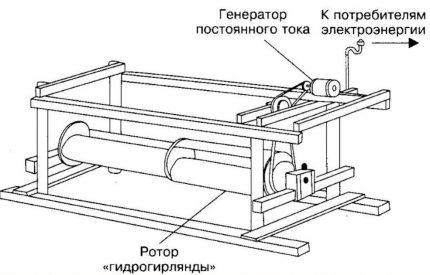
A modern analogue of a daisy-chain installation is submersible or tidal frame stations with transverse rotors. Unlike their garland predecessor, these structures do not block the entire river, but only use part of the channel, and they can be installed on a pontoon / raft or completely lowered to the bottom of the reservoir.
Vertical Rotor Darier
The Darier rotor is a turbine device that was named in honor of its inventor in 1931.The system consists of several aerodynamic blades fixed on radial beams, and works due to the differential pressure on the principle of the “lifting wing”, which is widely involved in shipbuilding and aviation.
Although these plants are more used to create wind generators, they can work with water. But in this case, accurate calculations are needed to select the thickness and width of the blades in accordance with the strength of the water stream.
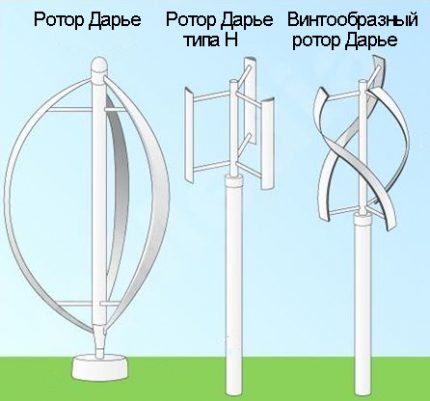
Vertical rotors are rarely used to create local hydropower plants. Despite the good performance indicators and the apparent simplicity of design, the equipment is quite difficult to operate.
Before starting work, the system needs to be "untwisted", but only the freezing of a reservoir can stop a running station. Therefore, the Darier rotor is used mainly in industrial enterprises.
An interesting solution in the field of designing small hydropower plants with a vertically operating turbine was proposed by the Austrian inventor Franz Zotloterer:
The weighty advantage of the whirlpools is rightly considered the conservation of fish resources. The operation of a vertical turbine does not harm living organisms of the river. In addition, mud does not linger on the walls of structures due to the specific movement of the water flow.
Underwater propeller
In fact, this is the easiest windmill, it is only installed under water. The dimensions of the blades to ensure maximum rotation speed and minimum resistance are calculated depending on the strength of the flow. For example, if the flow velocity does not exceed 2 m / s, then the width of the blade should be within 2-3 cm.
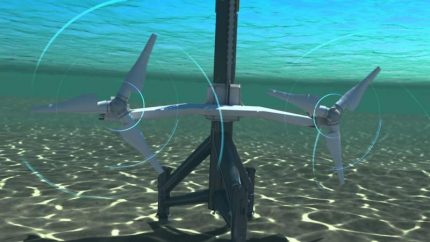
Such a windmill is installed “towards” the flow, but its blades do not work due to the pressure of the water pressure, but due to the occurrence of lifting force (by the principle of an airplane wing or ship propeller).
Water wheel with blades
A water wheel is one of the simplest options for a hydraulic motor, known since the time of the Roman Empire. The effectiveness of its work largely depends on the type of source on which it was installed.
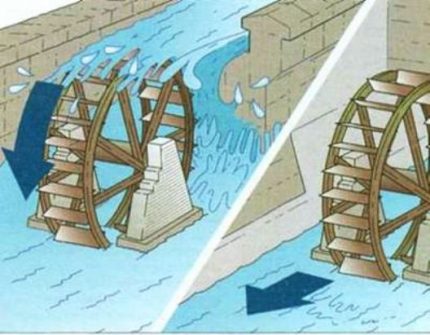
Depending on the depth and channel of the watercourse, various types of wheels can be installed:
- Submarine (or inferior) - Suitable for shallow rivers with a fast flow.
- Midbottom - are located in channels with natural cascades so that the stream flows approximately in the middle of the rotating drum.
- Bulk (or upper pit) - are installed under the dam, pipe or at the bottom of the natural threshold so that the falling water continues through the top of the wheel.
But the principle of operation for all options is one and the same: water enters the blades and drives a wheel, which makes the generator for a mini-power plant rotate.
Hydraulic equipment manufacturers offer off-the-shelf turbines whose blades are specially adapted for a specific water flow rate. But home craftsmen make drum structures the old fashioned way - from improvised materials.
The following photo selection will help you get acquainted with the steps of building the simplest version of a mini hydroelectric station:
Perhaps the lack of optimization will affect the efficiency indicators, but the cost of home-made equipment will cost several times cheaper than the purchased counterpart. Therefore, a water wheel is the most popular option for organizing your own mini-hydroelectric power station.
Conditions for the installation of a hydroelectric power station
Despite the tempting cheapness of energy generated by a hydrogenerator, it is important to take into account the features of a water source, the resources of which you plan to use for your own needs.
Indeed, not every watercourse is suitable for operating a mini-hydroelectric power station, all the more so year-round, so it will not hurt to have the ability to connect to a centralized highway in reserve.
A few pros and cons
The main advantages of an individual hydroelectric power station are obvious: inexpensive equipment that generates cheap electricity does not harm nature (unlike dams that block the river current). Although the system cannot be called absolutely safe, still rotating elements of turbines can cause injuries to the inhabitants of the underwater world and even to people.
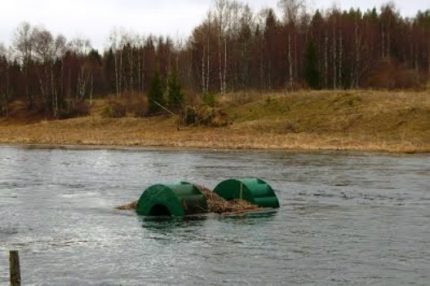
Advantages of mini-hydro:
- Unlike other “free” energy sources (solar panels, wind generators), hydraulic systems can work regardless of the time of day or weather. The only thing that can prevent them is the freezing of the reservoir.
- It is not necessary to have a large river to install a hydrogenerator - the same water wheels can be successfully used even in small (but fast!) Streams.
- Installations do not emit harmful substances, do not pollute water and work almost silently.
- For the installation of mini-hydroelectric power plants with a capacity of up to 100 kW, it is not necessary to draw up permits (although it all depends on local authorities and the type of installation).
- Excess electricity can be sold to neighboring houses.
As for the shortcomings, insufficient flow force can become a serious obstacle to the productive operation of equipment. In this case, it will be necessary to erect auxiliary structures, which entails additional costs.
If the potential energy of a nearby river is not enough for an approximate calculation to generate electricity in an amount sufficient for practical use, it is worth paying attention to wind turbines construction methods. The windmill will serve as an effective complement.
Water Flow Measurement
The first thing you need to do to think about the type and method of installation of the station is to measure the speed of the water flow at a chosen source.
The easiest way is to lower any lightweight object (for example, a tennis ball, a piece of polystyrene foam or a fishing float) onto the rapids and stop the time by which the swimmer will swim the distance to some landmark. The standard distance for the "swim" is 10 meters.

Now you need to divide the distance traveled in meters by the number of seconds - this will be the speed of the current. But if the obtained value is less than 1 m / s, it will be necessary to erect artificial structures in order to accelerate the flow by elevation differences.
This can be done with a collapsible dam or a narrow drain pipe. But without a good flow, the idea of a hydroelectric station will have to be abandoned.
Production of hydropower plants based on a water wheel
Of course, to assemble “on one knee” and build a colossus designed to service an enterprise or a settlement even from a dozen houses is an idea from the realm of fantasy. But to build a mini-hydroelectric station with your own hands to save electricity is quite real. Moreover, you can use both finished components and improvised materials.
Therefore, we consider step-by-step manufacturing of the simplest structure - a water wheel.
Necessary materials and tools
To make a mini-hydroelectric station with your own hands, you need to prepare a welding machine, a grinder, a drill and a set of auxiliary tools - a hammer, a screwdriver, a ruler.
From the materials you will need:
- Corners and sheet metal with a thickness of at least 5 mm.
- Pipes made of PVC or galvanized steel for the manufacture of blades.
- Generator (you can use a ready-made one or make it yourself, as in this example).
- Brake discs.
- Shaft and bearings.
- Plywood.
- Polystyrene resin for filling the rotor and stator.
- 15 mm copper wire for a makeshift generator.
- Neodymium magnets.
Please note that the wheel design will constantly come into contact with water, therefore metal and wooden elements must be selected with protection from moisture (or take care of their impregnation and painting yourself). Ideally, plywood can be replaced with plastic, but wooden parts are easier to get and shape.
Wheel assembly and nozzle manufacturing
The basis for the wheel itself can be two steel disks of the same diameter (if it is possible to get a steel drum from the cable - fine, this will greatly speed up the assembly process).
But if metal was not found in the materials at hand, it is possible to cut circles from waterproof plywood, although the strength and durability of even treated wood can not be compared with steel. Then on one of the disks you need to cut a round hole for installing the generator.
After that, the blades are made, and they will need at least 16 pcs. For this, galvanized pipes are cut lengthwise into two or four parts (depending on the diameter). Then, the cutting sites and the surface of the blades themselves must be sanded to reduce energy loss during friction.

The distance between the two side discs should be as close as possible to the length of the blades. In order to outline a place for the location of future hubs, it is recommended to make a template from plywood, on which a place for each part and a hole for fixing the wheel to the generator will be indicated. Ready marking can be attached on the outside of one of the drives.
Then the circles are installed parallel to each other using solid-threaded rods, and the blades are welded or fixed with bolts in the desired positions. The drum will rotate on bearings, and a frame of corners or pipes of small diameter is used as a support.
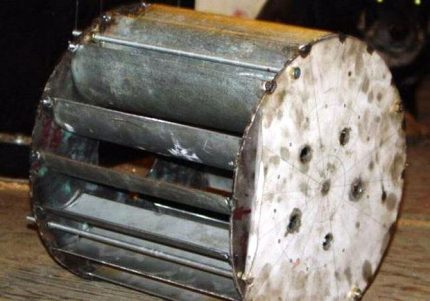
The nozzle is designed for water sources of the cascade type - such a installation will allow the maximum use of the flow energy. This auxiliary element is made by bending sheet metal with subsequent welding of the seams, and then it is mounted on the pipe.
However, if a flat river flows in your area without rapids and other high-altitude obstacles, this detail is not necessary.
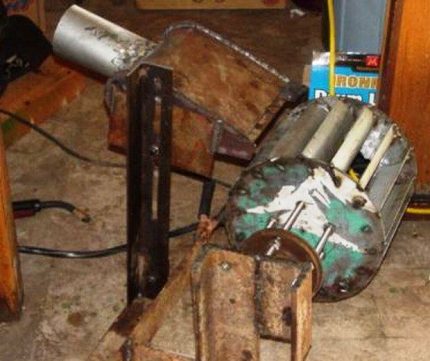
Now the wheel needs to be mounted on the axle and mounted on a support from the corners welded or bolted together. It remains to make a generator (or install it ready) and you can go to the river.
DIY generator
To make a homemade generator, you need to make a stator winding and fill, for which you need coils with 125 turns of copper wire on each. After joining them, the entire structure is filled with polyester resin.
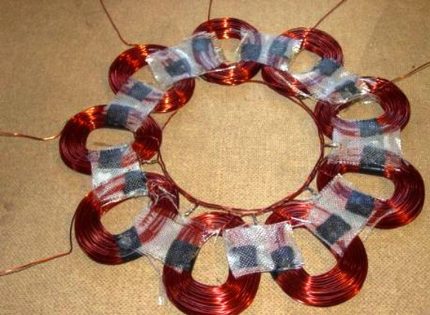
Now you need to prepare a plywood template that matches the size of the brake disc.
Markings are made on a wooden ring and slots are made for installing magnets (in this case, neodymium magnets 1.3 cm thick, 2.5 cm wide and 5 cm long were used). Then the resulting rotor is also filled with resin, and after drying it is attached to the drum of the wheel.

The last mounted aluminum casing with an ammeter, covering the rectifiers. The task of these elements is to convert three-phase current into direct current.

To prevent leaves, sand and other debris brought with the stream from falling into the wheel, it is advisable to put a protective net in front of the device.
You can also experiment with gaps between magnets and coils with an increased number of turns to increase the efficiency of the hydroelectric station.
About all types alternative energy sources You will find out by reading the article on introducing green technologies into everyday life.
Conclusions and useful video on the topic
Video # 1. An example of a working hydraulic installation with a self-made generator based on a three-phase engine:
Video # 2. Water-powered mini hydropower plant:
Video # 3.A station based on a bicycle wheel is an interesting solution to the problem of energy supply on vacation far from civilization:
As you can see, building a water mini-power plant with your own hands is not so difficult. But since most of the calculations and parameters for its components are determined “by eye”, one should be prepared for possible breakdowns and associated costs.
If you feel a lack of knowledge and experience in this field, you should trust the specialists who will perform all the necessary calculations, advise the equipment that is optimal for your case and install it in a quality manner.
Please write comments in the block below. Share interesting information and useful recommendations, leave thematic photos. Perhaps you want to tell how you built your own hydroelectric power station on a suburban site? We will be glad to read your story about the process of the device and operation.

 Do-it-yourself alternative energy for your home: a review of the best eco-technologies
Do-it-yourself alternative energy for your home: a review of the best eco-technologies 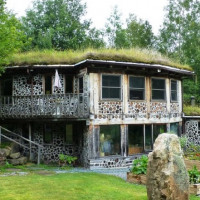 DIY eco-house construction: technological principles and schemes
DIY eco-house construction: technological principles and schemes 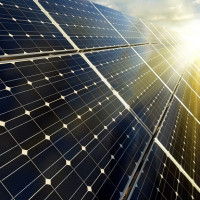 Alternative energy for the home: a review of non-standard energy sources
Alternative energy for the home: a review of non-standard energy sources 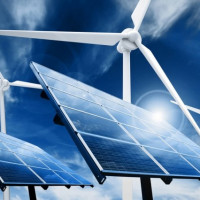 Alternative sources of heating for a country house: a comparative overview of eco-systems
Alternative sources of heating for a country house: a comparative overview of eco-systems 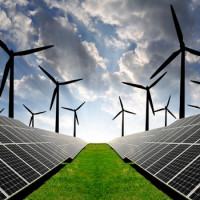 Autonomous power supply for a private house: an overview of the best local solutions
Autonomous power supply for a private house: an overview of the best local solutions  How much does it cost to connect gas to a private house: the price of organizing gas supply
How much does it cost to connect gas to a private house: the price of organizing gas supply  The best washing machines with dryer: model rating and customer tips
The best washing machines with dryer: model rating and customer tips  What is the color temperature of light and the nuances of choosing the temperature of the lamps to suit your needs
What is the color temperature of light and the nuances of choosing the temperature of the lamps to suit your needs  Replacement of a geyser in an apartment: replacement paperwork + basic norms and requirements
Replacement of a geyser in an apartment: replacement paperwork + basic norms and requirements
I saw such constructions in Uzbekistan when I went there on a business trip in the summer. There is tension with electricity, especially in the villages. In general, there the old version of Charchpalak was also turned into a mini-hydroelectric power station. That is, something else like jugs is welded on these blades, they draw water and pour into a tin drain. And it turns out that they also water their gardens from the canal, and the mini-hydropower station right there.
Yes, otherwise we have a problem this year. In the private sector there was a centralized water supply, near a river, everything was well done and worked. Regularly handed over money for maintenance and repair. Now the new authorities ordered to demolish everything old and build a new one using a different technology and, accordingly, payment. So now we and our neighbors are looking for cheaper ways to extract water, we must try this option. If you also get energy, it’s fine.
I have a river, I measured the speed of the current - in the spring about 0.28 m / s. To refuse to build a hydroelectric power station?
The flow rate is small, but no one bothers you to erect an artificial structure (for example, a separate channel with a small dam) to get a stream of water of the desired speed.
There are good examples in the article, but there isn’t enough Linev’s damless mini-hydroelectric power station, I’m attaching an approximate scheme (sketched by hand, plus a diagram from the Internet). Such a mini-hydroelectric power station is safe for the environment! And most importantly, Linev’s mini-hydroelectric power station does not have a single blade that would not work at any given moment, plus not one of them has any opposition. A plus visual video the implementation of this project.
Is it possible to order such a generator?
We have a river - what is needed, a powerful current, but not with hands, does someone know a person who can accept such an order?